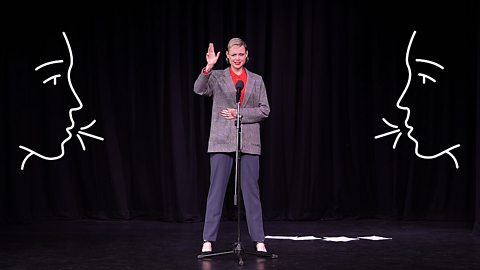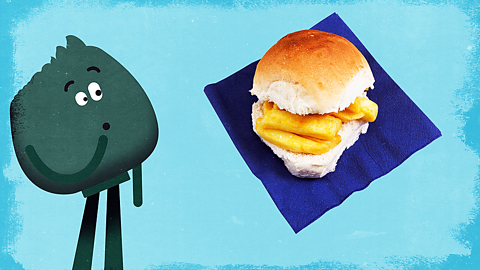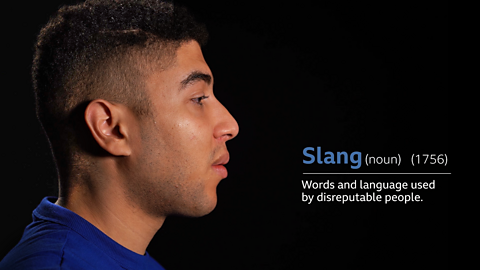Did you know?
The word âcomputerâ is actually over 400 years old.
The word âcomputerâ was first used in 1613 as a name for people who made calculations (who âcomputedâ the answers to mathematical problems). It was first used for a calculating machine in 1869, and first used for programmable electronic machines in 1946.
Introduction to multi-modal language
Do you ever wonder how technology has influenced the way we use language?
Key learning points
- How email and text messages have changed our language
- The influence of emojis and emoticons
- How technology lets us use images to communicate
- How and why the tone of text messages might change
How does technology influence language?
Technology has always had a big influence on language:
- When the printing press was invented (in the 15th century) the rules of spelling became more fixed so that people could read and understand what was printed.
- New inventions mean that new words have to be created to talk about them eg âcomputerâ, âtelevisionâ, âinternetâ, âlaptopâ and âwi-fi'.
- Text messages mean that we can have conversations using short written messages instead of speaking.
Some people think that change in language is a bad thing, but actually itâs really natural for language to change to suit the needs of the people using the language.
Abbreviating text
Mobile phones are quite new inventions.
When SMS (Short Message Service) messages, or text messages as we now call them, were first offered on mobile phones, there was a 160 character limit. This meant that people had to use no more than 160 letters, numbers or symbols in their messages. This limit meant people had to quickly find ways to shorten (abbreviate) their messages to fit more into the space.
Some common abbreviations:
- BRB = Iâll be right back
- L8R = later
- LOL = laugh out loud
- 4 = for
- U = you
Lots of these abbreviations are still used today, as itâs quicker and easier to send shortened versions and most people can easily understand their meaning.
Immediacy of email and text messages
Speech and writing can often be very different:
- Speech is immediate â we donât usually think too much before we speak and we often get an immediate response from whoever weâre speaking to.
- Writing is less immediate â we have the time to write in full sentences and think about the best way to communicate what we want to say. We donât expect an immediate response to our writing.
Developments in instant messaging technology have changed this though. We can now send a short written message using email, social media or instant messaging services and receive a reply almost immediately. This means that this type of writing has become more speech-like, and has conventions not normally found in Standard English:
- Messages have a non-standard sentence structure.
- There is no need to punctuate sentences unless it adds meaning.
- Abbreviations and non-standard spellings are commonplace.
- Emojis and emoticons are used to add non-verbal information.
- The medium allows for quick responses, so we can ask questions more easily.
Because of the mixing of speech and writing (which are different modes), this type of speech-like writing is called multi-modal language.
Influence of emoticons
A big limitation when using text messages is that itâs difficult to share non-verbal information. When you talk, you can use the tone of your voice and the expression on your face to add meaning to what you say. You canât do this in written messages on phones or social media, but emoticons can help.
Emoticons started off in 1982 with very simple punctuation used to represent facial expressions:
- : ) looks like a smile and was used to suggest the sender was happy.
- : P looks a bit like someone sticking out their tongue, so was used to show the sender was being cheeky or silly.
- : ( looks like a sad face and showed the senderâs unhappiness.
Luckily, there are now a wide range of emoticons for a lot of different facial expressions and many other things. This can help make up for the lack of non-verbal communication in written messages.
The word âemoticonâ comes from the words âemotionâ and âiconâ. They are now more commonly known as âemojiâ, which comes from Japanese.
Images as communication
In recent years, people communicating online and using instant messages have started to use images as a form of communication.
Certain images become very popular and are often used to mean something similar: these are called memes.
Sometimes people will send an animated or moving image, these are called gifs.
Like all other types of communication, using images to communicate will only be successful if the person receiving the message understands what the image means.
Different groups of people might have different images that they use to communicate. The meaning of these messages might not be clear to people outside of the group.
In this way, using images to communicate can work a bit like slang. Find out more about slang.
Tone of texts
The tone of text messages will depend on who theyâre sent by and why.
For example, a text you get from a friend might be very informal and include emoticons, non-standard sentence structures and abbreviations. This is because you will both understand the message, even though someone else might not.
A text you get from the dentist reminding you of an appointment youâve made, will probably be more formal. This type of text will use full sentences and standard spelling. This is because some people might not understand the message if non-standard, informal language is used.
With all types of communication, itâs important to think about the best type of language to use so that your message will be understood. In some cases, this will mean you can use emoticons, abbreviations and gifs. In other cases it might be best to use more standard formal language.
Find out more about formal and informal language.
Test your knowledge
Play Bitesize secondary games. gamePlay Bitesize secondary games
Have fun playing science, maths, history, geography and language games.

More on Spoken English
Find out more by working through a topic
- count1 of 5

- count2 of 5

- count3 of 5

- count4 of 5
